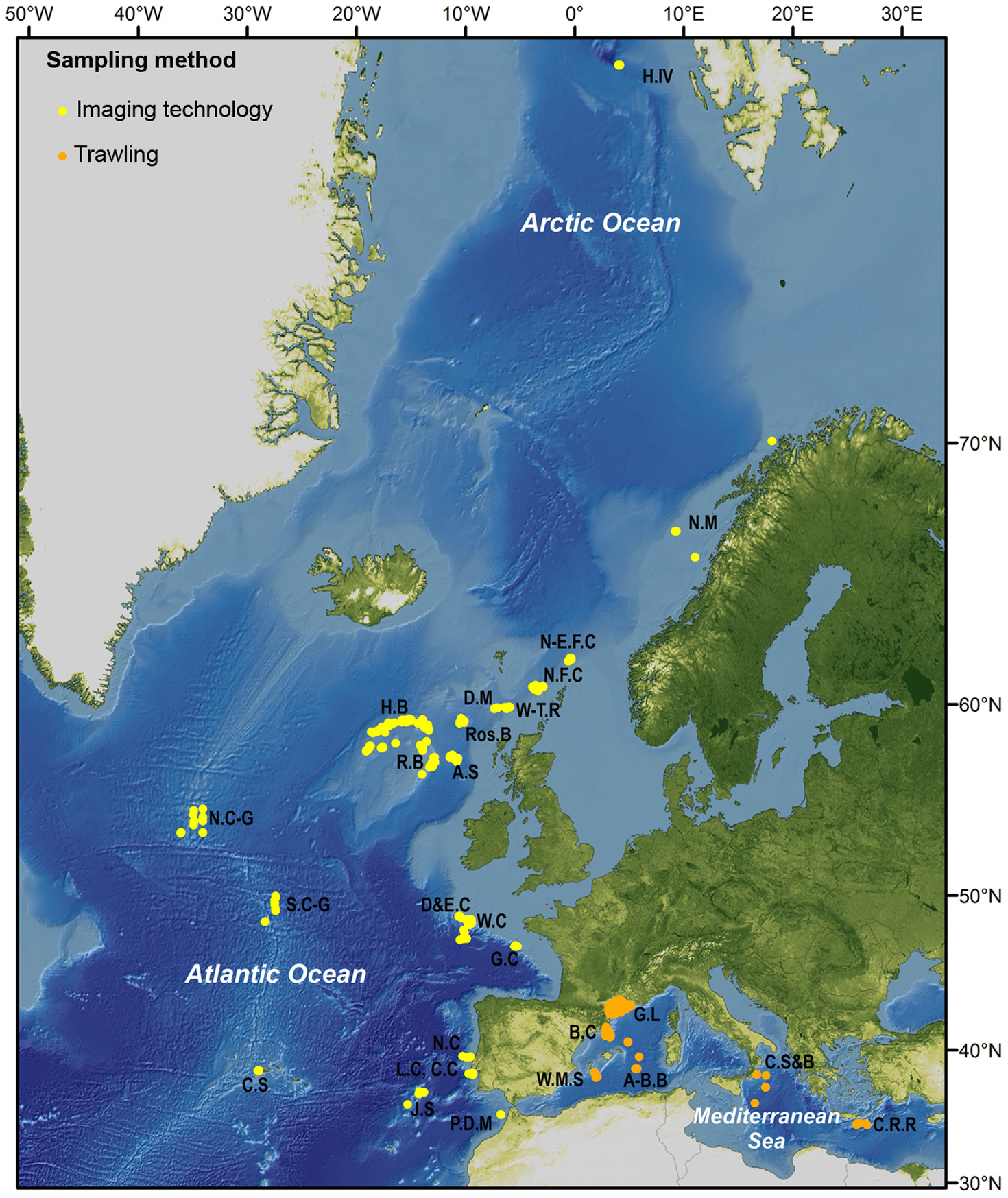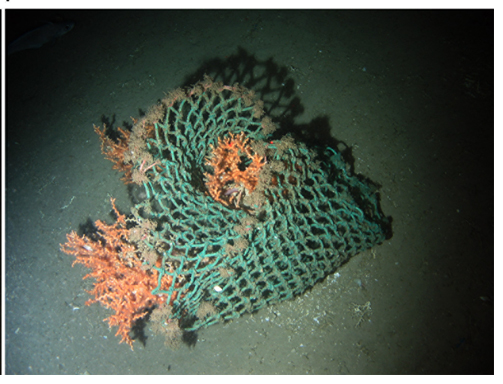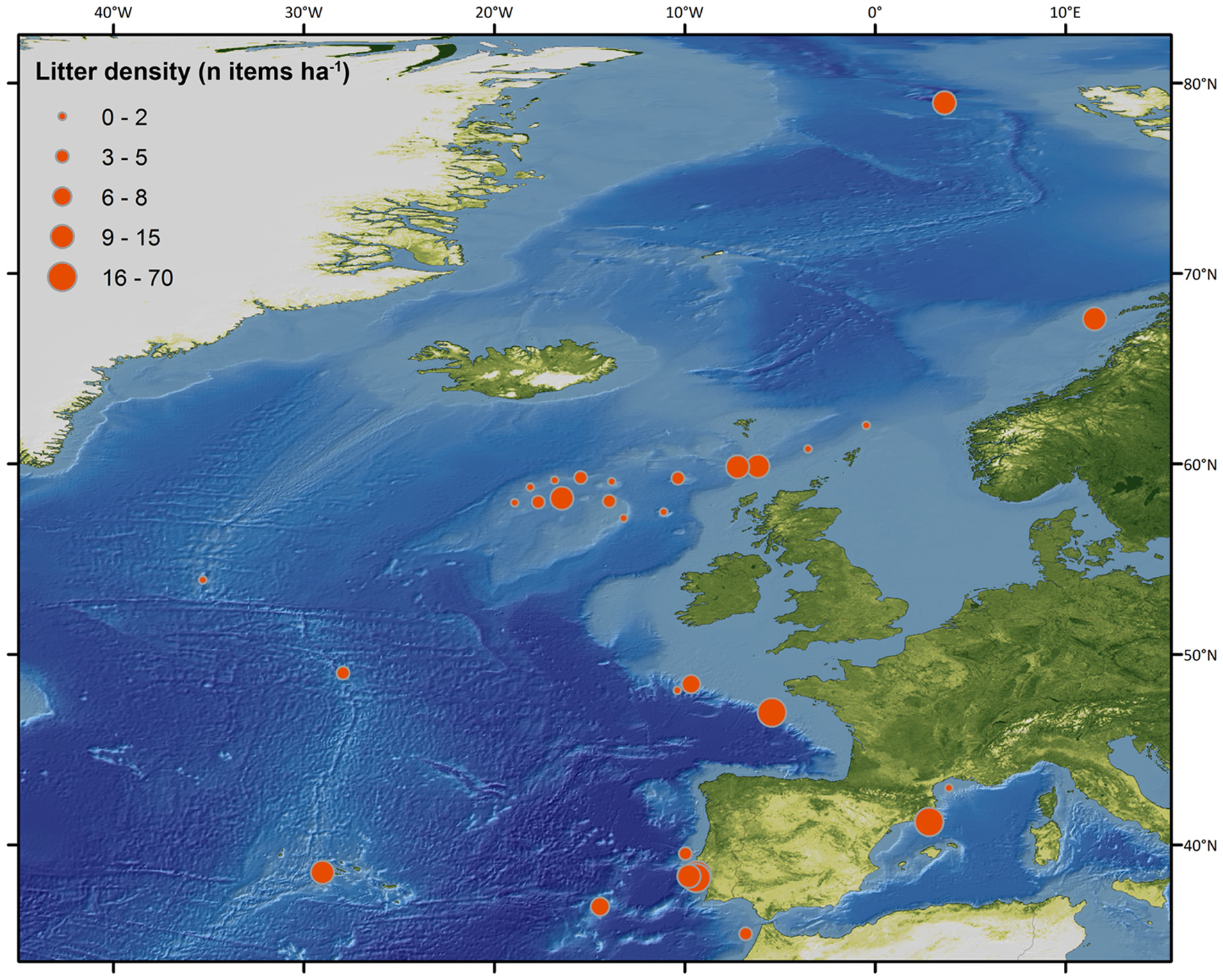“Litter from modern civilization has become so pervasive that scientists conducting the first comprehensive study of its undersea distribution couldn’t find any place they looked, including in some of the deepest oceans, where it didn’t exist. Using video from underwater drones and samples dredged off the seabed, researchers from 16 European organizations say they found rubbish everywhere from the Mediterranean to the mid-Atlantic ridge, about 1,250 miles from land. They found that plastic was the most common type of litter found, with items associated with fishing coming in second. But an extensive distribution of glass, metal, wood, paper, and cardboard was also observed.
Writing in the journal PLoS ONE, the researchers said the most dense accumulations of litter were found in deep underwater canyons. “Submarine canyons form the main connection between shallow coastal waters and the deep sea,” said mapping team leader Veerle Huvenne. “Canyons that are located close to major coastal towns and cities … can funnel litter straight to water depths of 4,500 meters (14,800 feet) or more,” he added. He added that the accumulation of marine litter is now a worldwide problem” (source).
“Marine Litter Distribution and Density in European Seas, from the Shelves to Deep Basins” (doi:10.1371/journal.pone.0095839.g001) – Abstract: Anthropogenic litter is present in all marine habitats, from beaches to the most remote points in the oceans. On the seafloor, marine litter, particularly plastic, can accumulate in high densities with deleterious consequences for its inhabitants. Yet, because of the high cost involved with sampling the seafloor, no large-scale assessment of distribution patterns was available to date. Here, we present data on litter distribution and density collected during 588 video and trawl surveys across 32 sites in European waters. We found litter to be present in the deepest areas and at locations as remote from land as the Charlie-Gibbs Fracture Zone across the Mid-Atlantic Ridge. The highest litter density occurs in submarine canyons, whilst the lowest density can be found on continental shelves and on ocean ridges. Plastic was the most prevalent litter item found on the seafloor. Litter from fishing activities (derelict fishing lines and nets) was particularly common on seamounts, banks, mounds, and ocean ridges. Our results highlight the extent of the problem and the need for action to prevent increasing accumulation of litter in marine environments.




